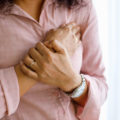Diabetes

How can I recognize diabetes?
Diabetes is widely prevalent worldwide, according to the World Health Organisation (WHO), around 422 million people are affected worldwide (as of 2014). As already mentioned, diabetes is usually insidious – classic symptoms, which would allow a conclusion to be drawn of the metabolic disorder, usually come too late.
Important to know:
Type 1 diabetes usually manifests itself significantly more quickly than type 2 diabetes, in some cases, within fewer weeks. Typical symptoms are clearly visible here. However, at the same time, this means that a majority of the insulin-forming cells have been destroyed in the pancreas
Pay attention to the classic symptoms: This indicates diabetes
The diagnosis of diabetes cannot be determined by a layperson, as even you never have all of the background information yourself, in order to make a clear statement. If individual symptoms listed below relate to you, this indicates diabetes – in this case, it is advisable to go to the family doctor as soon as possible and have the diagnosis of diabetes clarified with all of the well-proven methods.
1. Frequent urination
The increased urge to urinate, also referred to as polyuria, is one of the first symptoms with many persons affected. Via the urine, the body discharges more sugar than is contained in the blood. Accompanying this, affected persons have the constant urge to drink water in specific quantities.
2. Dry or itchy skin
The skin becomes rough and dry, if the body loses fluid, which escapes because the sugar contained in the blood is primarily discharged via the urine.
3. Weight loss
This only affects a minority, however it is particularly not uncommon with type 1 diabetes. The body uses up fat stores, in order to satisfy the energy requirement, which is no longer ensured, due to cells not working sufficiently. However, in several cases, the weight loss is also due to the continuous loss of fluid.
4. Impaired healing of wounds
It is not uncommon with diabetes that the immune system is also weakened, which leads to the skin circulation being impaired – wounds are not able to regulate themselves as well as a result of this.
5. Higher risk of infection
Athlete’s food, skin infections or even urinary tract infections, can occur more frequently with diabetics, due to the weakened immune system. In the literature, the more frequent occurrence of periodontitis is also referred to.
6. Breath smells of acetone (type 1 diabetes)
A strong indication for recognising diabetes is the acetone odour in the breath. Acetone smells like very ripe fruit, it develops when fat cells are reduced, because too little sugar reaches the blood. If this symptom manifests itself, there is a high risk that it involves a severe insulin deficiency – consecutive symptoms may be ketoacidosis (hyperacidity of the blood) or a diabetic coma, both are potentially life-threatening.
7. Fatigue
A very general symptom, which makes it clear that particularly with type 2 diabetes, insidious impairments and changes become visible. It is not without reason that doctors often only recognise diabetes, if routine examinations are performed or secondary diseases affect specific organs.




